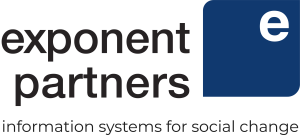Nonprofit Data Governance Best Practices
AKA: Don’t Forget to Care About Your Data
We get it. When it comes to your organizational systems and data, you have a lot going on and things are always changing. Your day-to-day relationship might involve training new staff on systems, double-checking you’re doing everything right to meet funder-mandated requirements, manually moving data from one platform to another, and struggling to generate reports. In short, information systems management in a nonprofit environment can be a complex and thankless job. Because of this, nonprofit data governance best practices are not something that are usually top of mind. However, this begs a bigger question: if nonprofit data governance was a top priority, would your day-to-day relationship with data improve? The answer, likely, is yes. This article will detail some basic starting points to help improve your organization’s relationship with data by focusing on data governance best practices through the lens of the nonprofit environment. Read on and learn a few ways to start changing the way your organization relates to its data!
Be clear on what data governance means
Listen… There is no shame or judgment if you’re not clear on exactly what data governance means to your organization. For most nonprofit organizations, data governance includes:
- Data quality management: how is incoming data being entered?
- Data security and privacy: what steps are you taking to protect your data and combat against possible security breaches?
- Data architecture and infrastructure: how do your systems connect, if they do at all?
- Data ownership: who owns what data – and do they know they own it?
- Data access and sharing: who has access to your data and how is it shared?
Get a handle on the current data landscape
The concept of data governance is about the proactive, strategic, and ongoing management of your data. But what about the data you have in your system today? An important part of the data governance journey is revisiting your actual data. It’s quite possible that your strategies – or staff – have changed dramatically since your system was originally implemented. Are you able to pull the reports you need today? Are the values actually telling you the story of your impact? If not, you may need to explore updating your data. This could involve scrubbing (or ‘normalizing’) data that was previously entered without strict formatting rules, retiring old fields that are no longer relevant to your operations, or converting unwieldy drop-down values into a cleaner, restricted picklist field. In short, it’s important to update old records to reflect changes in strategy or process before you start proactively implementing data governance best practices with the future in mind.
Ensure your data governance is mission-aligned
After taking a close look at each element of your organization’s data (as detailed above), another important nonprofit data governance best practice is to take a step back to determine how data will support your organization to achieve its mission. Ultimately, having clear data governance policies and processes will help your organization be confident in the integrity of your data and ultimately tell better stories of your social impact with it. Being able to collect the right data, store it and share it safely, and use it to tell stories of your organization’s impact is critically important. Also, taking a critical look at what aspects of your handling of data doesn’t serve the objective of meeting your mission is also important. This could be an opportunity to streamline, consolidate or eliminate unnecessary data practices that are distracting to your social impact goals.
Understand the key players and their struggles
Let’s not forget the human element of data governance. Ultimately, the data you are collecting, storing, sharing and reporting on is intensely human in nature: about humans, entered by humans, and for human consumption. It’s important to be very clear on all the real, live people involved with your organization’s data governance. This could be frontline staff capturing constituent details, management generating reports, IT staff focusing on security, and beyond. To that end, identifying internal stakeholders who can fulfill the role of data steward can be very beneficial. Data stewards can help define the right data hygiene practices to ensure your data is complete, accurate and secure. These individuals can then work with the humans in your organization on an ongoing basis in an effort to align to your defined nonprofit data governance best practices. At the end of the day, ensuring cohesion between the people and the process will help ensure its success.
Check in, revise, iterate
Like we are constantly reminded, our world can feel volatile, uncertain, chaotic and ambiguous. Data governance best practices for nonprofits is no different. Even if your organization strategically invests in developing robust and inclusive data governance plans, it can’t be something that’s a ‘one and done’ scenario. Continually revisiting your data governance practices, checking in with data stewards, and evolving the policies as the organization itself evolves will help ensure that data governance becomes an ongoing part of your organization’s information systems plan. In doing so, you can hope to have a positive long-term relationship with your organization’s data, instilling confidence in its integrity and the ability to tell compelling stories of your organization’s impact.
Does your organization need help developing or updating your data governance plan? Don’t hesitate to reach out to our expert team for a conversation!

